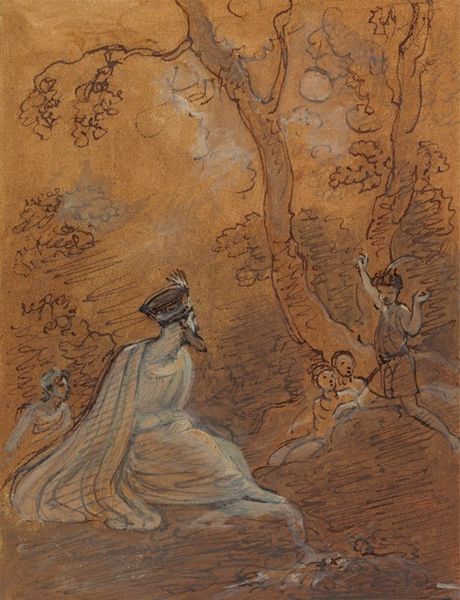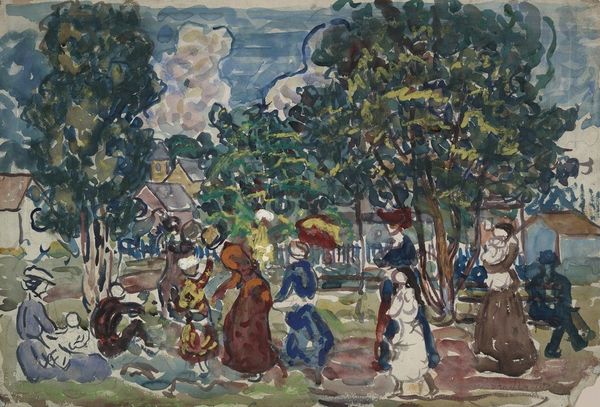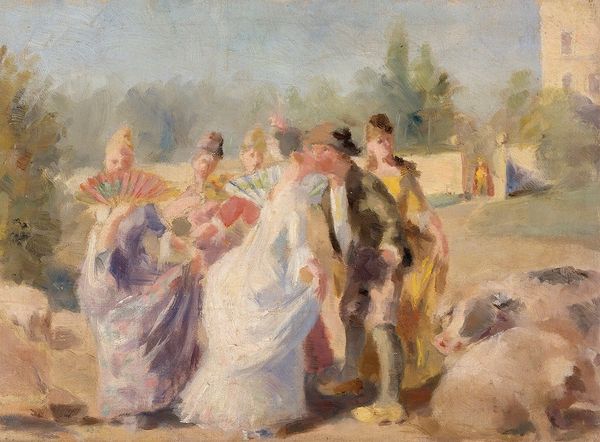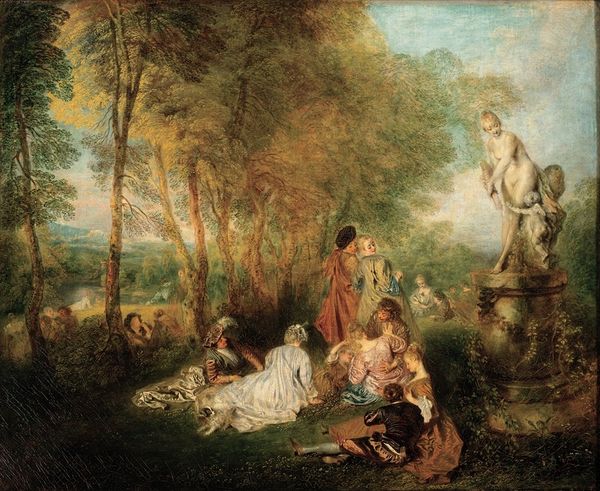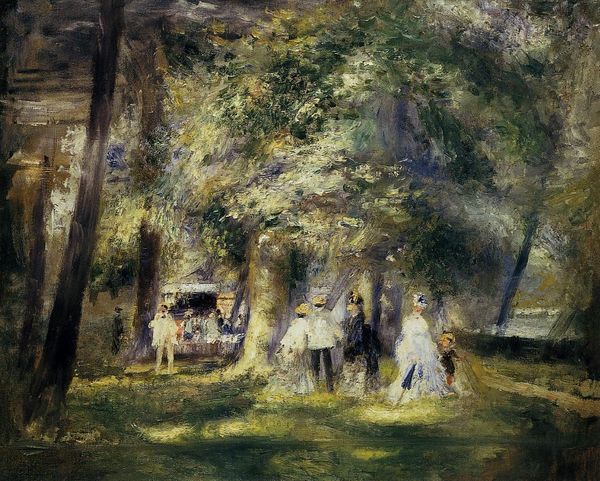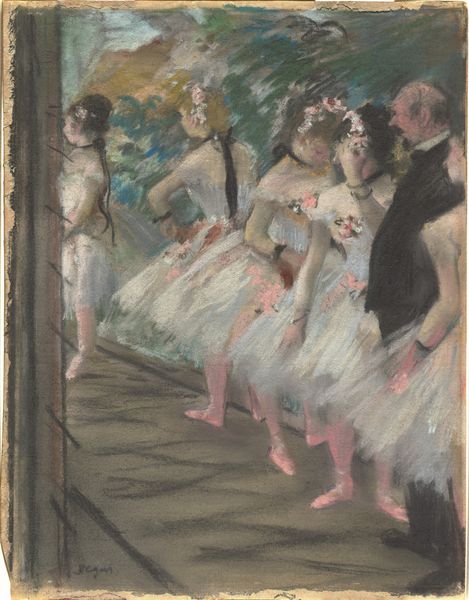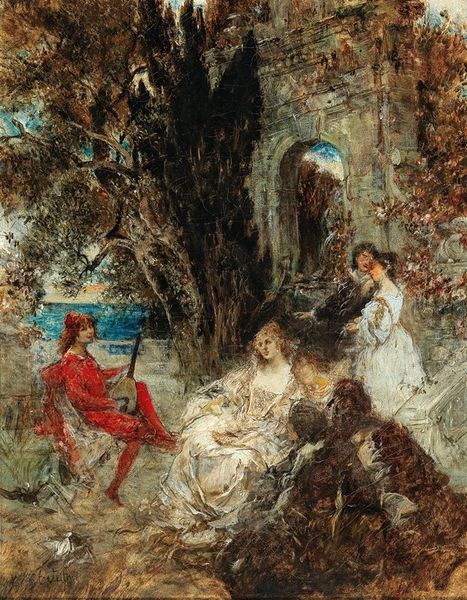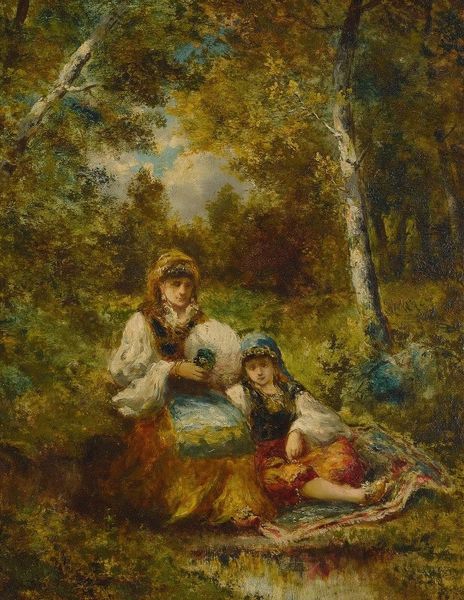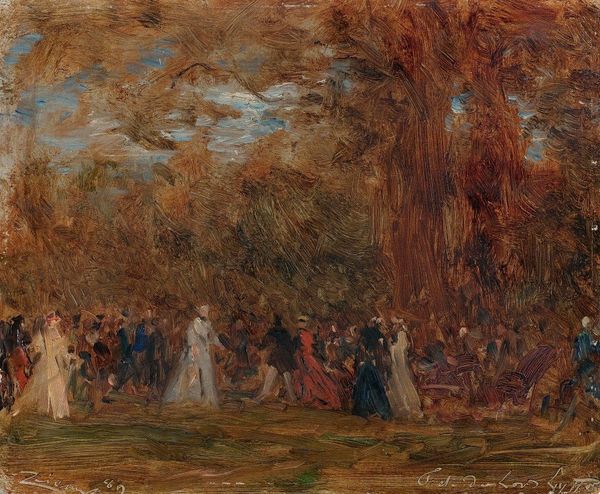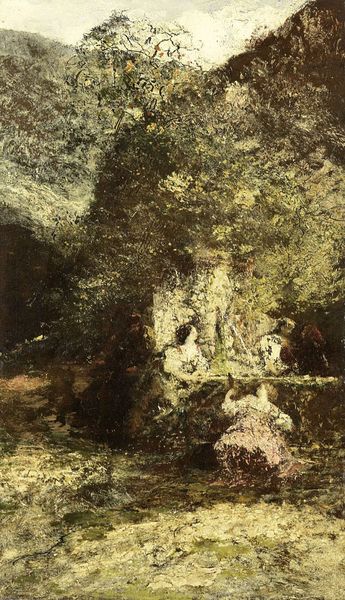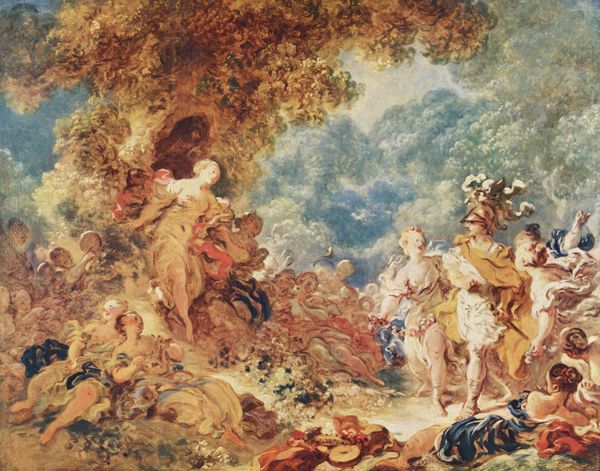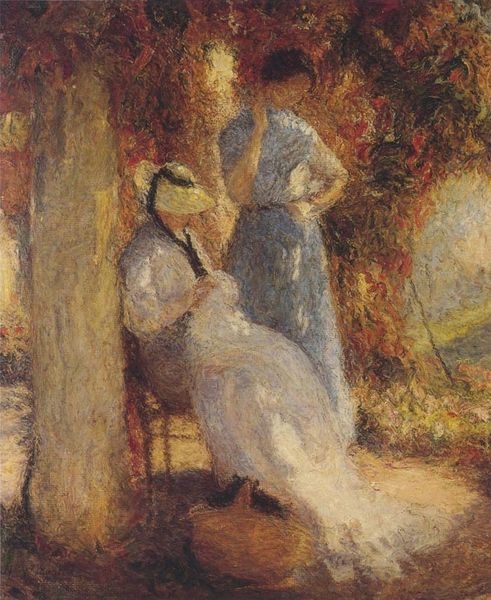
Copyright: Public Domain: Artvee
Georges Clairin created this watercolor painting, called Fête champêtre aux environs de Paris, during the late 19th century. In this scene, we see women in elegant dresses enjoying leisure time in a park outside of Paris, reflecting the Belle Époque's emphasis on refinement and enjoyment of life. Looking closely, the scene unfolds through visual cues of the period. The women's attire, from their hats to the cut of their dresses, speaks to the fashion norms of the time. The presence of sailboats in the background suggests proximity to the Seine, a popular area for recreation. We can consider how this image is related to the broader social and economic context of France at the time. France was experiencing rapid industrialization, and a growing middle class had more access to leisure and consumer goods. This artwork shows the ideals of that class. It certainly does not critique any institutions of art, and could be considered conservative, showing the status quo. Art historians rely on resources such as fashion plates, social commentaries, and economic data to understand the meaning behind such imagery. What we see as timeless art is in fact deeply rooted in its specific time and place.
Comments
No comments
Be the first to comment and join the conversation on the ultimate creative platform.
